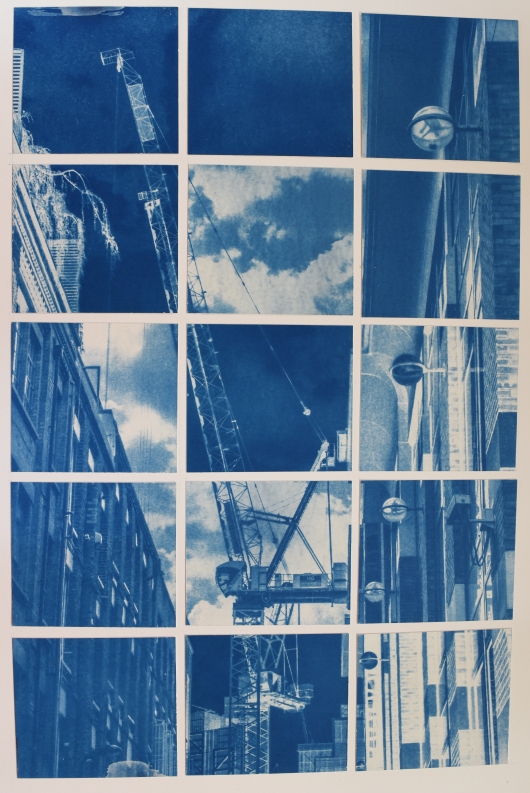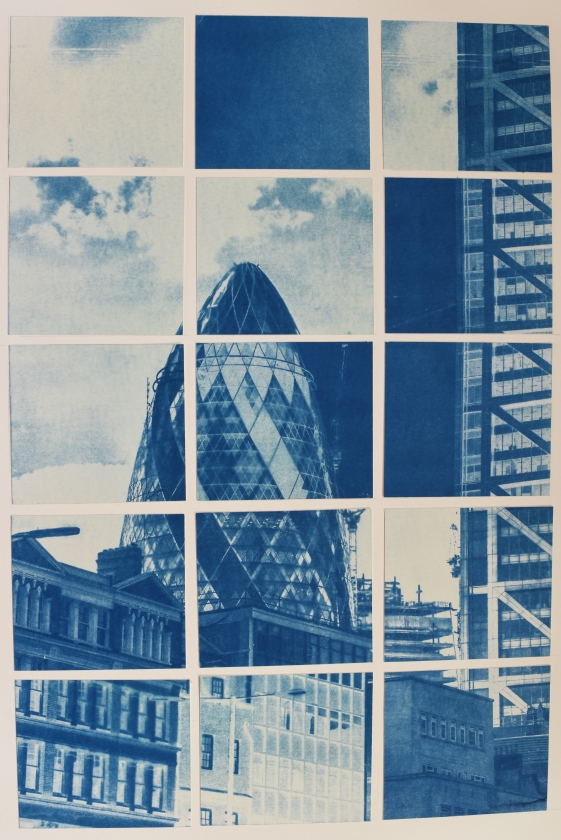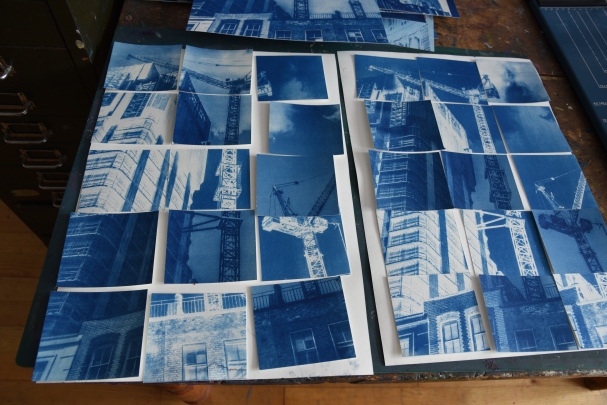I showed the class the completed images today, always a slightly nerve wracking experience. Luckily the reaction was positive. We decided that I would submit/ display 4 vertical images & the 2 long horizontal. I think that they work well together. Zig also suggested framing the original rather than displaying the photographs. Now I have to find frames.
Zig also told me how to take photographs of final pieces of work. Rather than taking photographs of the images with them on the floor with a prime lens to mount them on the wall & use a zoom lens.
Which I have done. There is a certain amount of distortion but better than before.
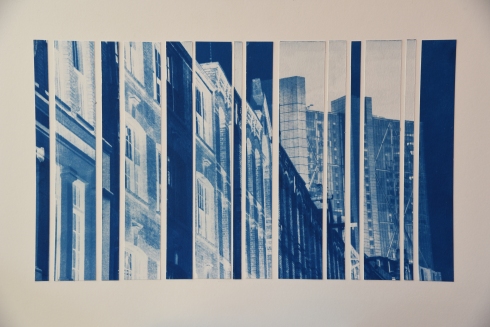
During the project I feel that I have gained a lot from using a combination of my research on urban landscape photographers, alternative processes & Hockney’s multiple images to take me further than I would otherwise have gone. (5)
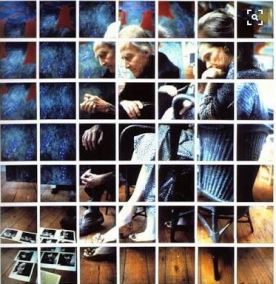

I feel that the two images which consist of vertical strips work well as they almost give the feeling of walking along the street & taking in what you pass by in fragments. The other 4 images are more static but provide a fragmented image which the viewer has to piece together. Instead of the 4 being the same format it might have been more interesting if I had used a different arrangement for 2 of the images but this is something to experiment with in the future.
In retrospect I would have taken more images which would have given me more to choose from but perhaps more importantly in my future work I will have a better idea of which images would work well as cyanotypes & how to process the original images to get the best out of them. I have also learnt more about the process of producing the actual cyanotypes.
While I was working on my cyanotypes I was reminded of dutch ceramic tiles & views through windows particularly those by artists such as Raoul Duffy & Pierre Bonnard as well as one by Chagall. I was interested in how we see images as fragments but reassemble them in our mind to make them whole. I would like to continue along this theme experimenting with the repetition & fragmentation of images. As well as taking them a step further and investigating the possibilities provided by giving them a sculptural dimension. (5)

I would also like to pursue one of my earlier thoughts, reflections in water & glass. Perhaps combining images together that would not normally be connected.
After a certain amount of hunting on the web for suitable frames for my images I decided that Ikea was the best option for both price & speed. I wasn’t intending to go for white frames but these were the only “box” frames available in that size. In the end I was pleased with the white option as the frame did not distract from the image. I then had to do some card cutting on which I mounted the images. In all it was quite successful if not a bit on the large side.













